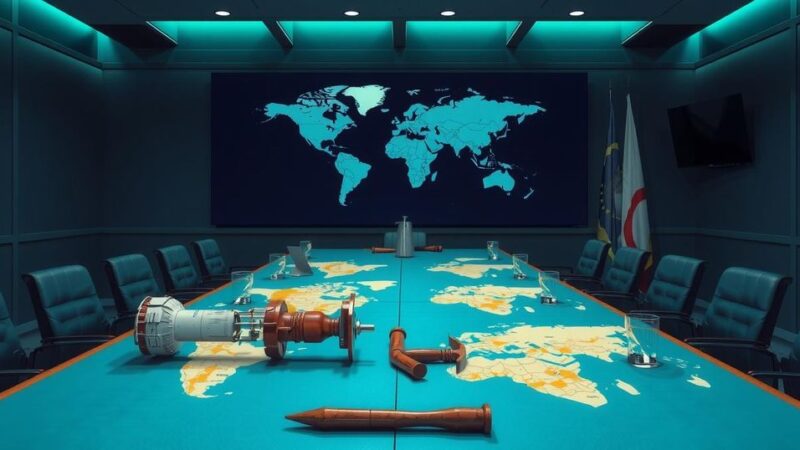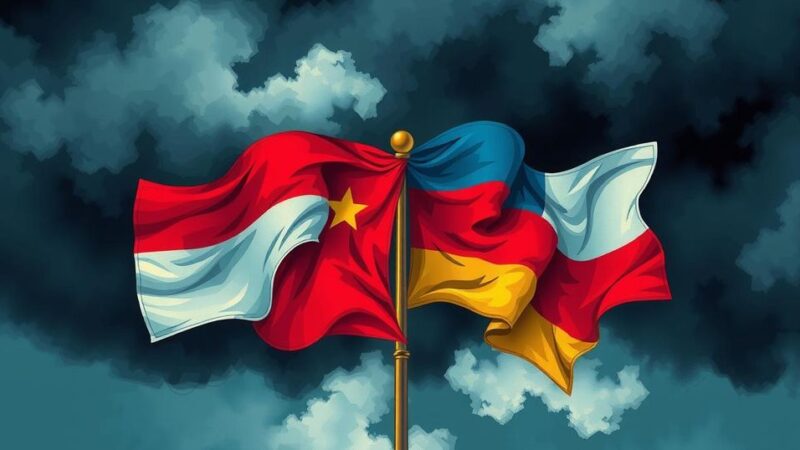Ahmed al-Sharaa’s interim presidency represents a complex challenge for unifying Syria after a devastating civil war, characterized by deep tribal and sectarian divides. While centralizing power, Sharaa’s approach is at odds with local realities, suggesting that a shift towards federalism may be necessary for effective governance and national reconciliation. The successful implementation of federalism would require careful resource management and the creation of autonomous regions for diverse groups to prevent further conflict.
Syria’s interim president, Ahmed al-Sharaa, faces the challenge of unifying a fractured nation after a prolonged civil war that has given rise to tribal and sectarian loyalties. Representing Sunni Arabs through Hayat Tahrir al-Sham (HTS), Sharaa rejects federalism in favor of a centralized system. However, adopting a federal approach could facilitate national reconciliation and aid in rebuilding the war-torn country more effectively.
Sharaa’s governing authority is limited, controlling only parts of western Syria while facing resistance from various factions. In the south, former rebel groups oppose integration into his administration, and Kurdish forces express skepticism towards Sharaa’s intentions. The pro-Turkish Syrian National Army remains assertive in key regions, creating a complex landscape for governance that undermines Sharaa’s ability to unite different ethnic and regional factions.
The disjointed reality of Syrian society, marked by distinct local identities, contradicts Sharaa’s centralized aspirations. While some Sunni populations may gravitate towards Damascus, other groups such as the Kurds and Druze aim to maintain their self-governing arrangements, complicating the path to national unity. Sharaa’s approach, influenced by historical grievances, leads to fears that federalism would divide the nation rather than unify it.
Identifying issues within the opposition reflects early hierarchical structures that were rooted outside Syria, which has hindered unified efforts. HTS emerged as a prominent faction, operating nationally despite being originally deemed a terrorist group. Consequently, Sharaa’s government draws personnel from diverse backgrounds, which aids local engagement, though funding and efficient governance remain constrained.
Current political structures are sustained by personal loyalties, which may not be scalable as the population grows. Sharaa’s reliance on HTS and personalized governance mimics past failures, particularly Assad’s limited decentralization that exacerbated tensions. To avert similar outcomes, Sharaa may need to genuinely implement a decentralized federal system, balancing power among diverse Syrian groups.
International stakeholders should link post-war financial support to the establishment of a federal framework, enabling greater autonomy for minority groups. This includes managing resources and resolving territorial disputes, as seen in potential Kurdish control over oil and other vital resources. Achieving balance in resource allocation is fundamental to prevent escalating conflicts over essential supplies.
If implemented successfully, federalism could address Syria’s sectarian divisions and support equitable governance. However, the challenge of resource distribution between a central authority and regional entities must be navigated carefully. Comprehensive federalism may prove essential for a stable post-war Syria, fostering lasting peace and collaboration among its diverse populations.
In summary, for Syria to progress beyond its deeply entrenched divisions, it must consider a federal structure that genuinely decentralizes political power. Ahmed al-Sharaa’s current centralized model is inadequate for uniting the various factions. Instead, fostering inclusive governance and equitable resource distribution through federalism could be crucial in facilitating national reconciliation and ensuring long-term stability.
Original Source: www.washingtoninstitute.org






